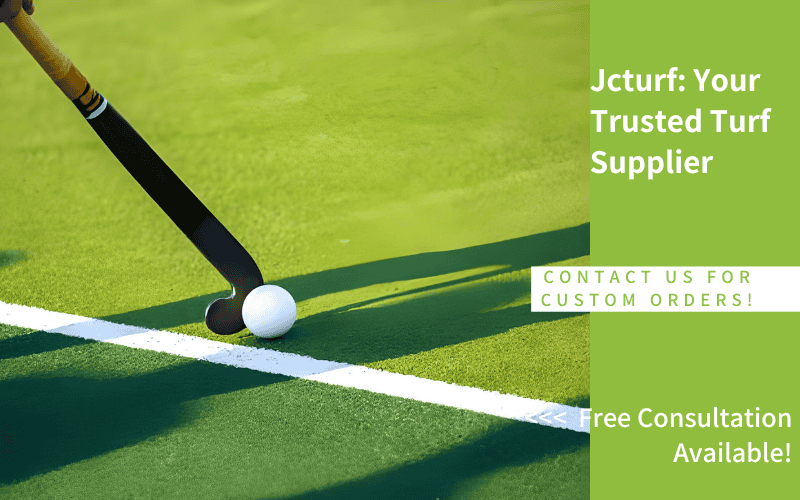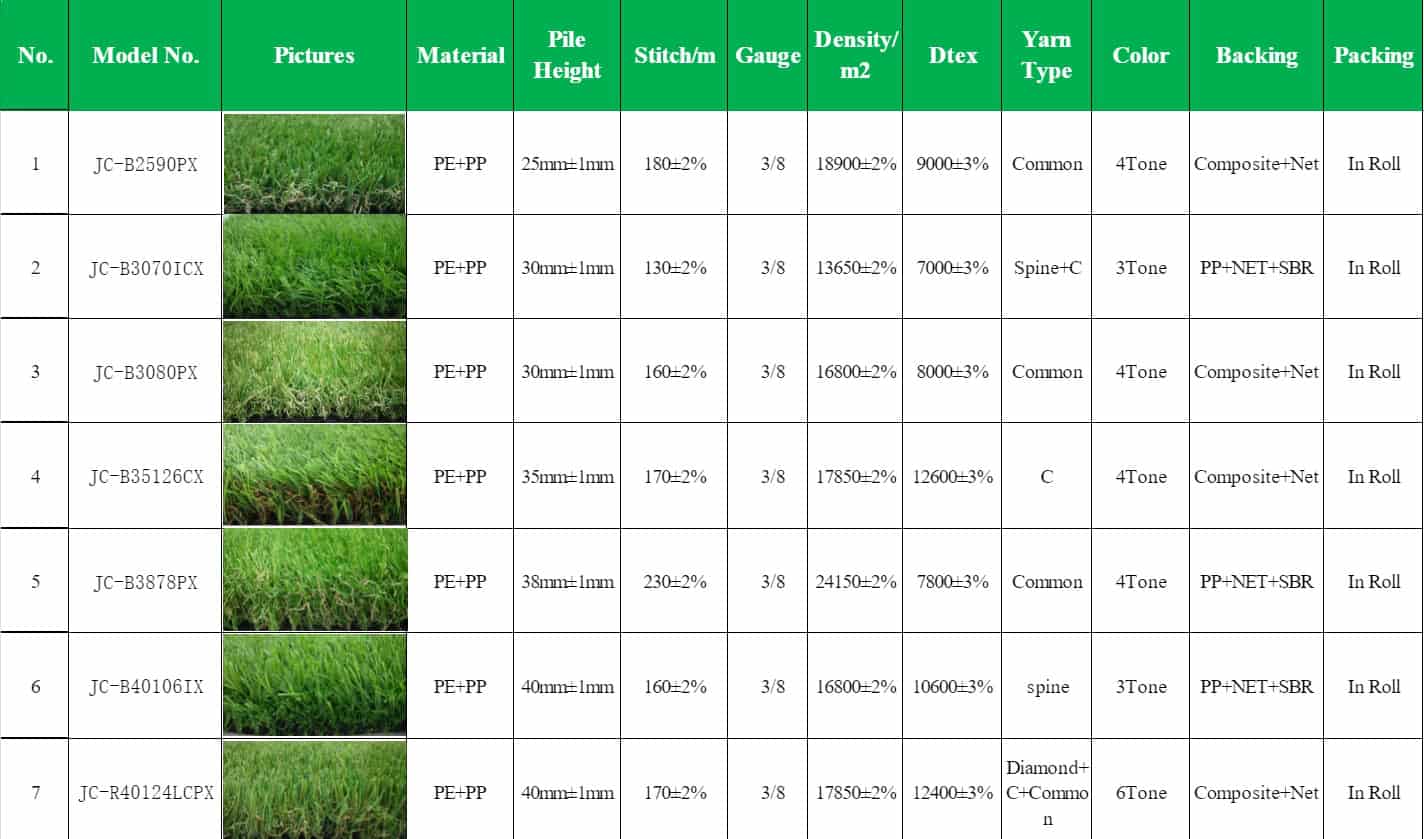If you’re looking to install or upgrade a field hockey surface, choosing the right turf is crucial for both performance and maintenance.
We’ll answer your key questions, from understanding what field hockey turf is, to exploring the types available and why artificial turf is the best choice for the sport. We will provide comprehensive guidance to assist you in choosing the most suitable turf, understanding the installation procedure, and being aware of the associated expenses. Plus, we’ll highlight the latest innovations and trends shaping the future of field hockey turf.
Is hockey played on AstroTurf?
Yes, hockey is played on artificial turf, which has replaced natural grass due to its consistent surface, faster ball speed, durability, and adherence to International Hockey Federation standards for major competitions.
What Is Hockey Turf Made Of?
Hockey turf is made from synthetic fibers like polyethylene and nylon. Polyethylene boasts a soft texture and exceptional durability, whereas nylon stands out for its superior strength and is commonly employed in high-performance athletic fields. The turf is filled with infill materials, like rubber or sand, to improve ball speed and cushioning, providing a smooth, stable surface.
Why Is Field Hockey Not Played on Grass?
Field hockey is not played on natural grass because it can become uneven, affecting ball movement and player safety. Grass fields also require frequent maintenance and still wear down quickly. Artificial turf offers a stable, low-maintenance alternative that withstands the heavy use of field hockey.
Can I Use Field Hockey Turf for My Home?
Yes, you can! Smaller versions of field hockey turf are available for home use. While professional turf can be expensive, home turf is affordable and easy to install, providing a great way to practice in your backyard.
What are the different types of hockey turfs?
Choosing the right type of field hockey turf is essential for performance and maintenance. Let’s take a look at the main turf types used for the sport.
Water-Based Turf
Water-based turf is commonly used in professional and Olympic field hockey. This turf is designed to be watered regularly, which helps reduce friction and ensures a smooth, consistent ball roll.
The water layer gives the turf a feel similar to natural grass, allowing for faster play and better control. While it offers high performance, water-based turf requires more maintenance, including frequent watering and care.
Sand-Based or Sand-Dressed Turf
Sand-based turf uses a sand infill to create a more durable, low-maintenance surface. This type is often used in club-level and recreational fields because it requires less upkeep than water-based turf.
The sand layer enhances the turf’s durability and stability, making it a reliable and cost-effective option for various levels of play. It’s also more resilient to wear and tear, which makes it ideal for fields with heavy use.
Why Should You Choose Artificial Turf for Field Hockey?
Artificial turf has become the go-to surface for field hockey, offering key advantages over natural grass. Let’s explore why it’s the better choice.
Performance and Gameplay Advantages
Consistent Playing Surface: Artificial turf provides a flat, uniform surface, ensuring predictable ball roll and bounce, allowing players to execute precise passes, movements, and strategies without disruption from uneven terrain.
Improved Ball Control and Faster Gameplay: The smooth, even texture enhances ball control, enabling players to refine skills, make agile movements, and maintain precision. It also facilitates faster ball speeds, making the game more dynamic, competitive, and exciting.
Reduced Stoppages and Enhanced Agility: The consistent surface minimizes rule infringements caused by uneven ground, reducing interruptions and ensuring smoother gameplay. Players gain confidence in their movements, improving agility and performance.
Durability and Maintenance Benefits
Longer Lifespan and Reduced Maintenance: Artificial turf is highly durable, withstanding heavy usage over time. It requires minimal upkeep, eliminating the need for watering, mowing, and fertilizing, saving time and resources.
Weather Resilience: Unlike natural grass, artificial turf remains playable in various weather conditions, such as heavy rain or drought, ensuring consistent game schedules with minimal downtime.
Cost-Effectiveness: Although the initial installation cost is higher, the reduced maintenance and extended lifespan make artificial turf a cost-efficient long-term solution.
Other Key Benefits
Environmental Sustainability: Artificial turf reduces water usage and eliminates the need for harmful chemicals like pesticides and fertilizers, making it an eco-friendly alternative to natural grass.
Player Safety: Its even, predictable surface reduces injury risks caused by uneven terrain, providing a safer playing environment for athletes.
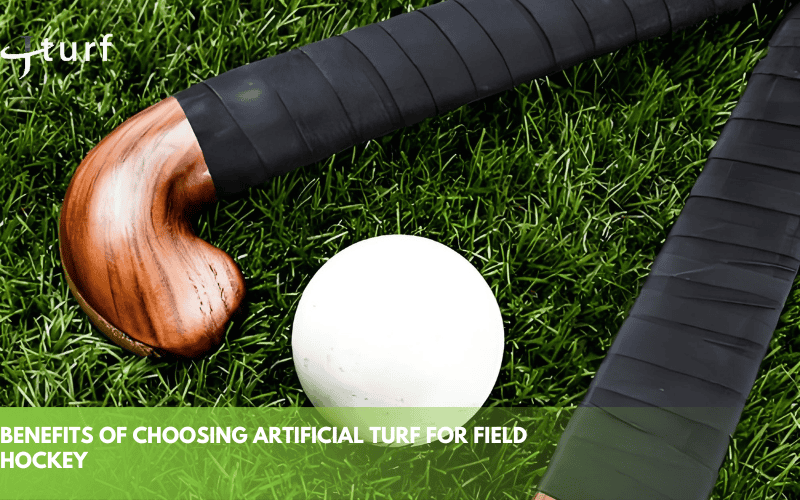
How to Choose Field Hockey Turf?
Selecting the appropriate field hockey turf necessitates finding an equilibrium between performance, maintenance requirements, and budget constraints. Below are the pivotal factors to take into account when arriving at your decision.
Comparison of Turf Types
Different turf types serve different needs.
| Turf Type | Best For | Maintenance | Durability | Cost |
| Water-Based Turfs | Professional play, wet conditions | Requires regular watering to maintain performance | High durability, ideal for frequent use | High initial cost, but superior performance |
| Sand-Dressed Turfs | Multi-sport use, general playing conditions | Moderate maintenance, occasional sand leveling | Durable, suitable for medium to high traffic | More affordable than water-based turfs |
| Sand-Filled Turfs | Recreational or multi-sport fields | Low maintenance, periodic sand replenishment | Good durability, ideal for light to moderate use | Most cost-effective option |
Size and Layout of the Field
The size of your field affects your turf choice. Larger fields need durable turf that can handle heavy use, while smaller fields can use more affordable, low-maintenance options.
Usage Intensity
High-Traffic Fields: For competitive matches and frequent training sessions, opt for more durable turf capable of withstanding heavy wear and tear. These turfs are designed to maintain their quality despite constant use.
Lower-Traffic Fields: Recreational or occasional use fields may not require the same level of durability. Consider cost-effective options that still provide adequate performance for less intense usage.
Climate Considerations
Wet Climates: Water-based turfs are ideal due to their excellent drainage capabilities, ensuring the field remains playable even in heavy rain.
Dry Climates: Sand-dressed or sand-filled turfs offer a firmer playing surface, suitable for environments with less precipitation.
Performance Factors
Performance is crucial for gameplay. Here are the key factors:
- Ball Speed and Bounce: Water-based turf provides the fastest ball roll, ideal for competitive play, while sand-based turf is slower but reliable for casual use.
- Player Traction and Comfort: Water-based turf offers superior traction, while sand-based turf is more comfortable for recreational players.
Safety and Injury Prevention
Turf affects player safety in key ways:
- Shock Absorption and Impact Resistance: Water-based turf offers superior shock absorption capabilities, effectively minimizing the risk of injuries resulting from falls and impacts.
- Reducing Skin Abrasions and Burns: Water-based turf is also the best option for preventing abrasions and burns during play.
Environmental and Maintenance Considerations
- Water Usage: Water-based turf requires more watering, which may not be ideal in areas with water restrictions. Sand-based turf uses less water.
- Sustainability and Eco-Friendly Materials: Hybrid turf is often made from more sustainable materials, reducing environmental impact.
- Maintenance Requirements and Costs: Water-based turf requires more upkeep, while sand-based turf needs much less maintenance and is more cost-effective long-term.
Budget and Accessibility
- Water-Based Turfs: Though they often come with a higher initial cost, these turfs provide superior playability and safety features, making them a worthwhile investment for professional settings.
- Sand-Dressed and Sand-Filled Turfs: More budget-friendly options, especially for schools and clubs with multi-sport needs, offering good performance at a lower cost.
- Long-Term Investment and Lifespan: Water-based turf is a long-term investment with a high return for competitive play, while sand-based and hybrid turfs are more affordable with excellent durability.
Tips
Pile Height: Shorter pile heights are generally preferred for high-level play, offering a faster, more precise playing surface.
Material Quality: Evaluate the durability and UV resistance of the turf material, such as polypropylene, nylon, or polyethylene, to ensure long-term performance.
Installation: Ensure the turf is installed according to FIH standards and recommendations for optimal functionality and compliance.
Testing and Certification: Choose turf systems that are independently tested and certified by the FIH (Federation Internationale de Hockey) to guarantee quality and safety.
How tall is the artificial turf in field hockey?
Artificial turf used in field hockey usually has a pile height between 13mm and 23mm (0.5 to 0.9 inches). In sand-dressed systems, which are commonly used for hockey pitches, the pile height ranges from 18mm to 22mm, with sand infill covering 60-80% of the pile height to maintain fiber stability.
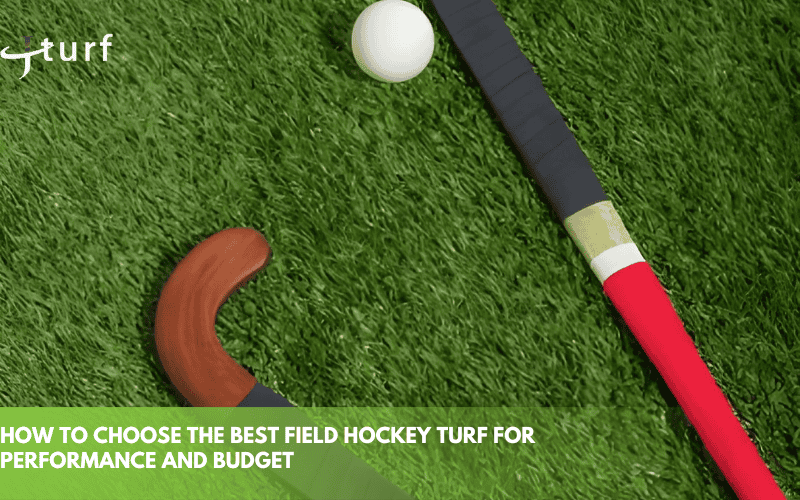
How to Install Field Hockey Turf?
Installing field hockey turf requires careful planning and execution to ensure a smooth, durable playing surface.
Installation Process
The installation of field hockey turf involves several crucial steps. First, the site must be cleared and leveled to ensure a stable base. Once the ground is prepared, a base layer of crushed stone or gravel is laid down to allow proper drainage. This prevents water from pooling on the surface and ensures longevity.
Next, the turf rolls are carefully aligned and secured. In the majority of systems, this process entails cutting and stitching the turf to ensure it fits the field properly. Afterward, the infill material (such as sand or rubber) is spread evenly across the surface to stabilize the turf and improve its performance.
Finally, once the turf is in place, the field is inspected for smoothness, proper alignment, and drainage efficiency. A well-installed field should have no wrinkles or gaps and should provide consistent playability.
Post-Installation Care
Appropriate after-installation maintenance is crucial for sustaining the performance of the turf over an extended period. Routine maintenance ensures the turf remains functional and visually appealing for years.
- Cleaning and Brushing: Regularly remove debris and brush the surface to prevent compaction. This helps the infill settle evenly and maintains the turf’s bounce and speed.
- Infill Maintenance: As time goes by, the infill may require replenishment. If the turf begins to feel uneven or shows wear in high-traffic areas, adding more infill material ensures it stays stable and cushioned.
- Repairs: Promptly address any damage or tears to avoid further deterioration. A simple patch can prevent larger issues down the line.
- Drainage Checks: Keeping the drainage system clear is particularly important for water-based turf. Blockages can cause water buildup, affecting playability and turf health.
By maintaining these practices, you’ll ensure that your field hockey turf stays in top condition, maximizing its lifespan and performance.
Astro Turf Hockey Field Cost
The total cost for installing a Synthetic Turf field is typically between $250,000 and $500,000, depending on the specifics of the project.
Initial Installation Costs
- AstroTurf material typically costs $5 to $10 per square foot. For a full-sized field, the material cost can range from $150,000 to $300,000.
- Site preparation (clearing, base layers, drainage) adds another $50,000 to $100,000.
Infill Material: Sand or rubber infill costs around $10,000 to $30,000, depending on the field size and turf type.
Professional Installation: Labor costs for professional installation range from $100,000 to $200,000.
Ongoing Maintenance: Maintenance, including brushing and infill replenishment, costs $5,000 to $15,000 per year.
How Long Does Field Hockey Turf Last?
Field hockey turf can last between 8 to 12 years, depending on the type of turf, maintenance, and usage. High-quality turf with proper care can last even longer, while heavy use and poor maintenance may shorten its lifespan.
Can Field Hockey Turf Be Used for Other Sports?
Yes, field hockey turf is suitable for other sports such as soccer, lacrosse, and can also be utilized for general recreational activities. However, it’s designed specifically for field hockey, so the performance may vary depending on the sport.
What Kind of Turf Is Field Hockey Played On?
Field hockey is contested on synthetic turf, available in water-based, sand-based, or hybrid varieties. Water-based turf is commonly used in professional settings for its smooth ball roll and high performance.
Why Is Field Hockey Turf Wet?
Field hockey turf is often watered to reduce friction and provide a consistent playing surface. Water helps the ball move smoothly, especially on water-based turf, which is common in competitive play.
Why Is Field Hockey Turf Blue?
Field hockey turf is often blue to enhance visibility, particularly for TV broadcasts. The color contrast helps players see the ball more clearly, making the game faster and more visually engaging.
How to Find the Best Field Hockey Turf Manufacturer for Your Project
Choosing the right field hockey turf is only part of building a high-performance field.
Working with an experienced manufacturer ensures you get consistent quality, proper certifications, and expert support from start to finish.
At JCturf, we specialize in producing professional-grade field hockey turf tailored to your project’s needs—whether you need a water-based, sand-based, or hybrid solution.
Our products are engineered for durability, smooth ball performance, and player safety, while meeting international standards for quality and sustainability.
We offer both standard turf options and fully customized solutions to fit different field sizes, budgets, and usage levels.
If you are planning to build or upgrade a field hockey facility, we are here to support you with expert advice, manufacturing excellence, and reliable export services.
Contact our team today to find the best turf solution for your project and elevate your field hockey experience.

